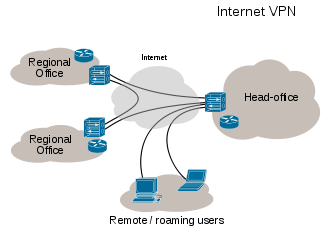The GPRS Core Network is the centralised part of the GPRS system and also provides support for WCDMA based 3G networks. The GPRS core network is an integrated part of the GSM core network. 
The GPRS Core Network (GPRS stands for General Packet Radio Services) provides mobility management, session management and transport for Internet Protocol packet services in GSM and WCDMA networks. The core network also provides support for other additional functions such as billing and lawful interception.
- GPRS Tunnelling Protocol (GTP)
GPRS Tunnelling Protocol is the defining IP protocol of the GPRS core network. It is the protocol which allows end users of a GSM or WCDMA network to move from place to place while continuing to connect to the internet as if from one location at the Gateway GPRS Support Node (GGSN). It does this by carrying the subscriber's data from the subscriber's current Serving GPRS Support Node (SGSN) to the GGSN which is handling the subscriber's session. The forms of GTP used by the GPRS core network
GTP-U: for transfer of user datain separated tunnels for each PDP context
GTP-C: for control reasons
- GPRS Support Nodes (GSN)
A GSN is a network node which supports the use of GPRS in the GSM core network. All GSNs should have a Gn interface and support the GPRS Tunnelling Protocol.
There are two key variants of the GSN;
GGSN and the SGSN
- Access Point
An access point is:
An IP network to which a mobile can be connected
A set of settings which are used for that connection
A particular option in a set of settings in a mobile phone
When a GPRS mobile phone sets up a PDP context, the access point is selected.
- PDP Context
The PDP (Packet Data Protocol, e.g. IP, X.25, FrameRelay) context is a data structure present on both the SGSN and the GGSN which contains the subscriber's session information when the subscriber has an active session. When a mobile wants to use GPRS, it must first attach and then activate a PDP context. This allocates a PDP context data structure in the SGSN that the subscriber is currently visiting and the GGSN serving the subscribers access point. The data recorded includes:
Subscriber's IP address
Subscriber's IMSI
Subscriber's
Tunnel Endpoint ID (TEID) at the GGSN
Tunnel Endpoint ID (TEID) at the SGSN
The Tunnel Endpoint ID (TEID) is a number allocated by the GSN which identifies the tunnelled data related to a particular PDP context.
There are two kinds of PDP contexts:
Primary PDP Context : Has a unique IP address associated with it
Secondary PDP Context : Shares an IP address with another PDP context
A total of 11 PDP contexts (with any combination of Primary and Secondary) can co-exist.





0 comments:
Post a Comment